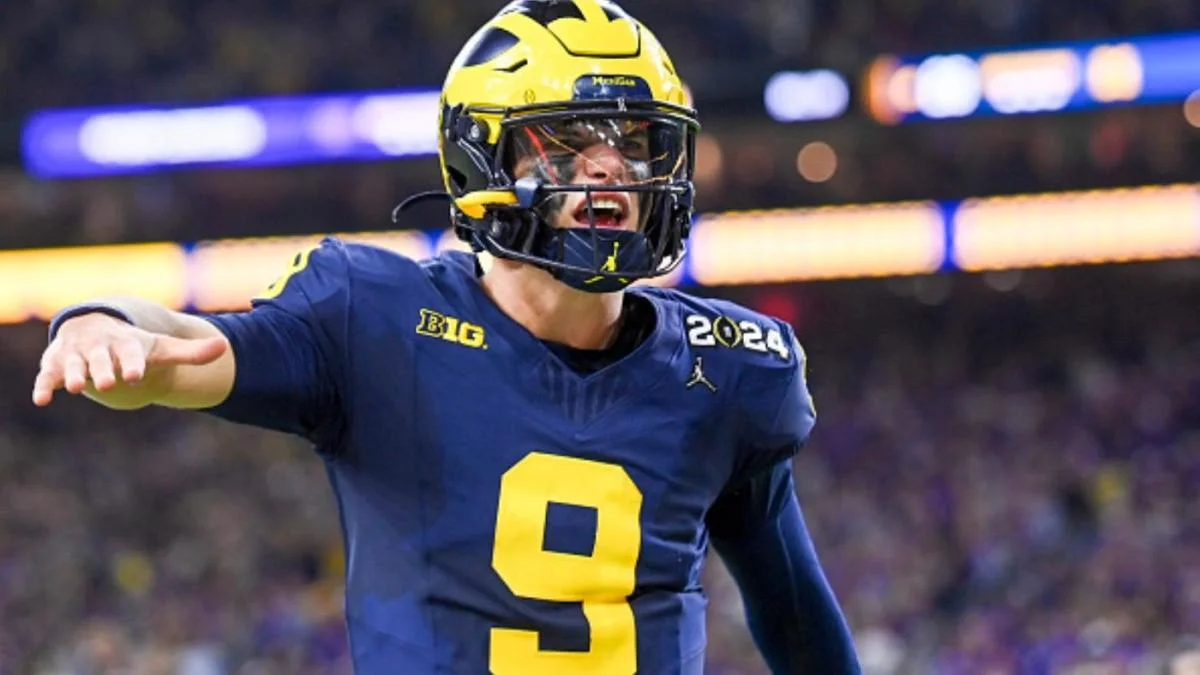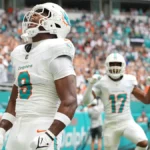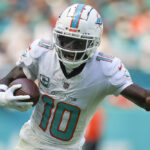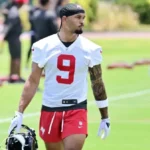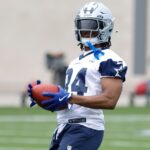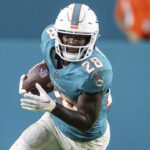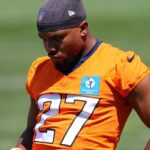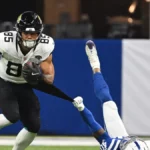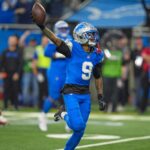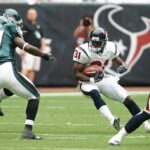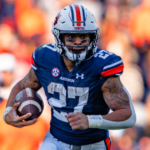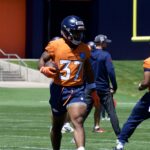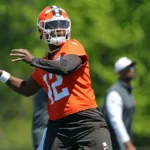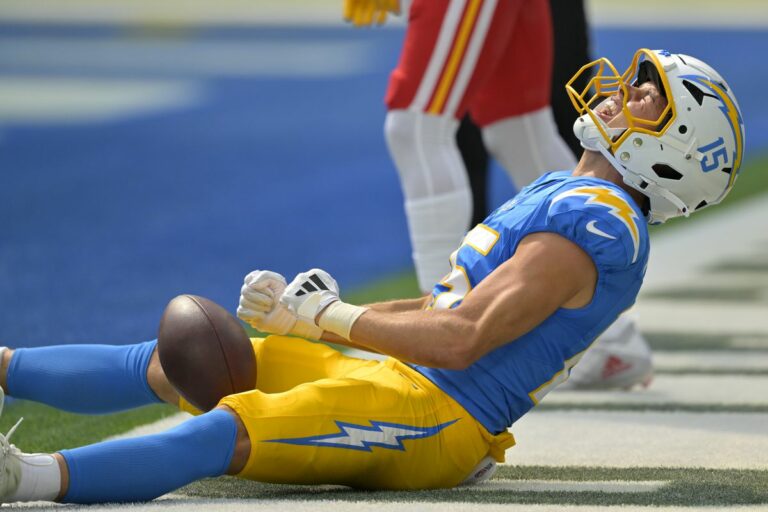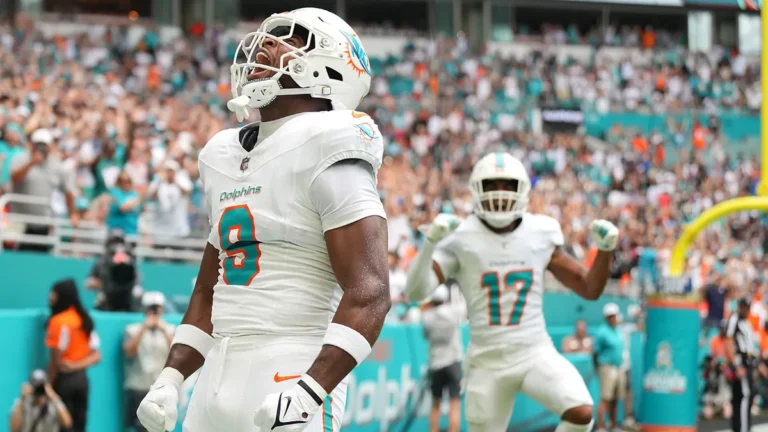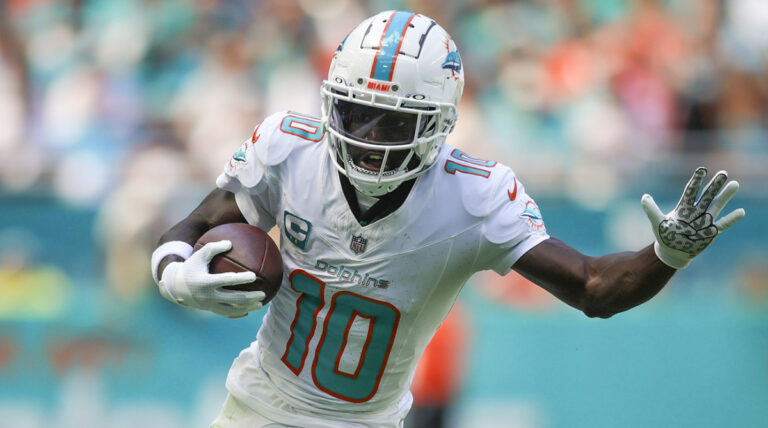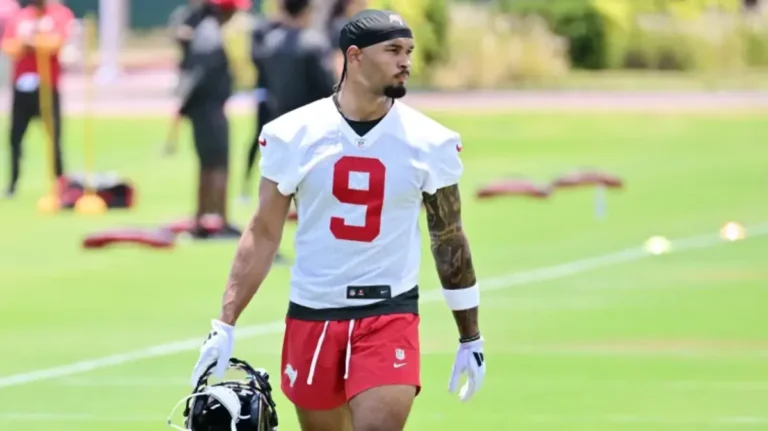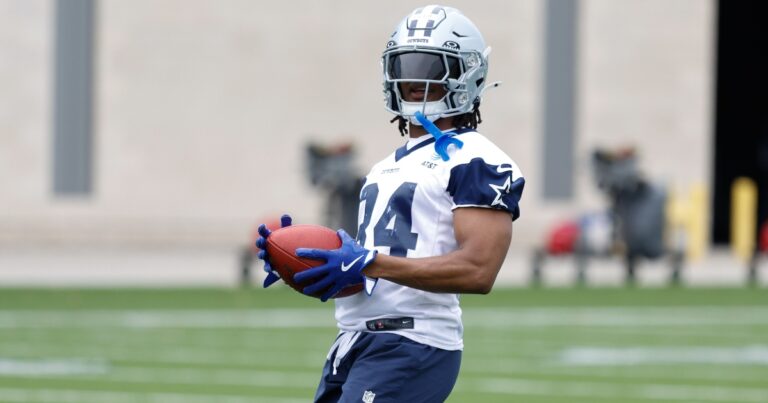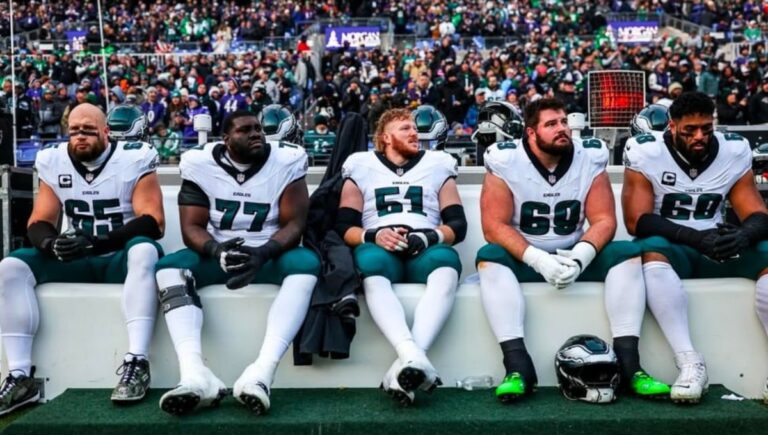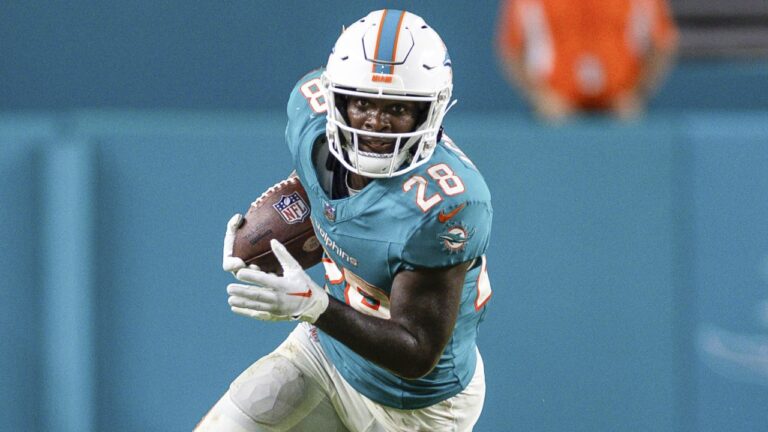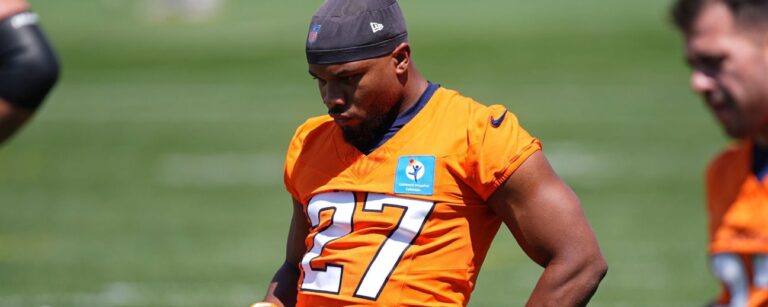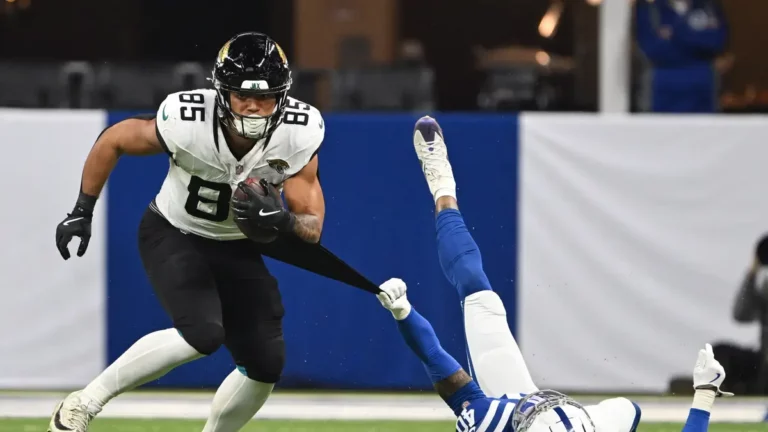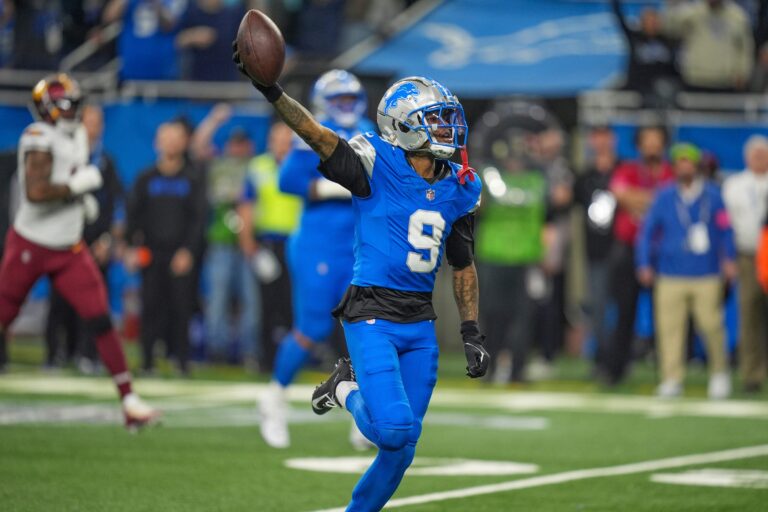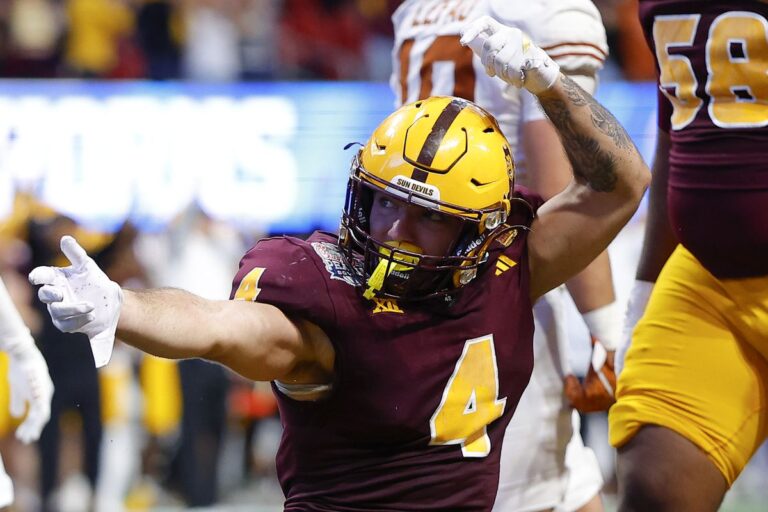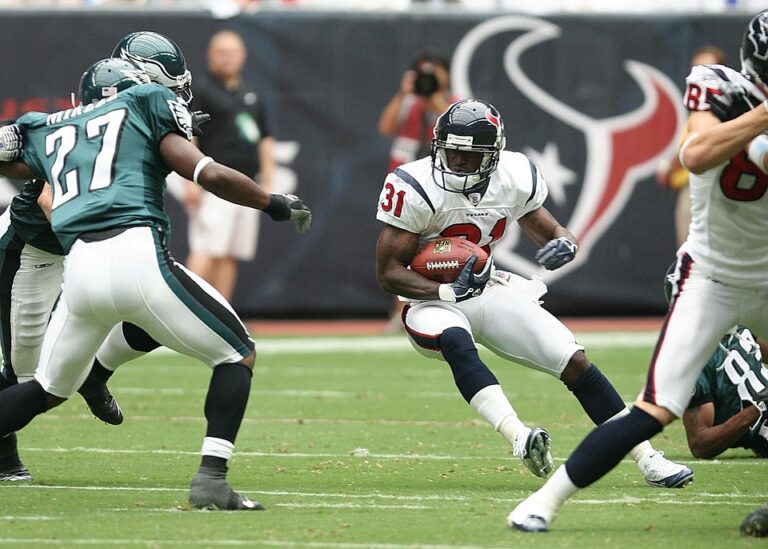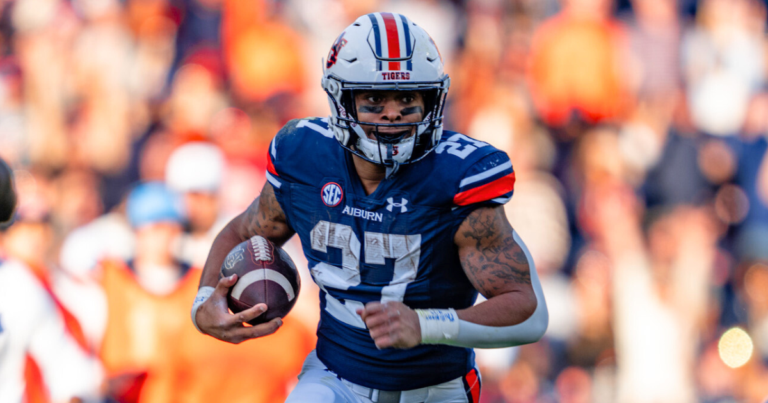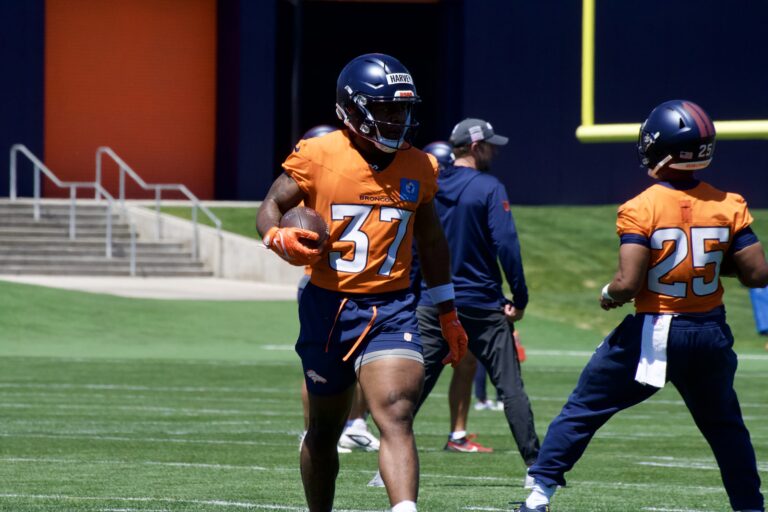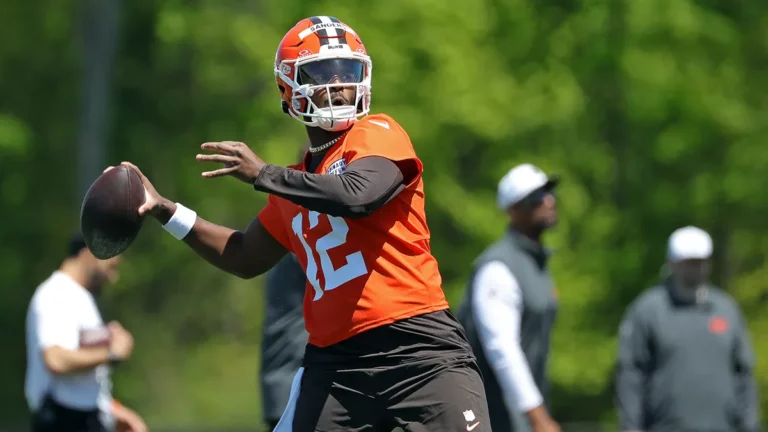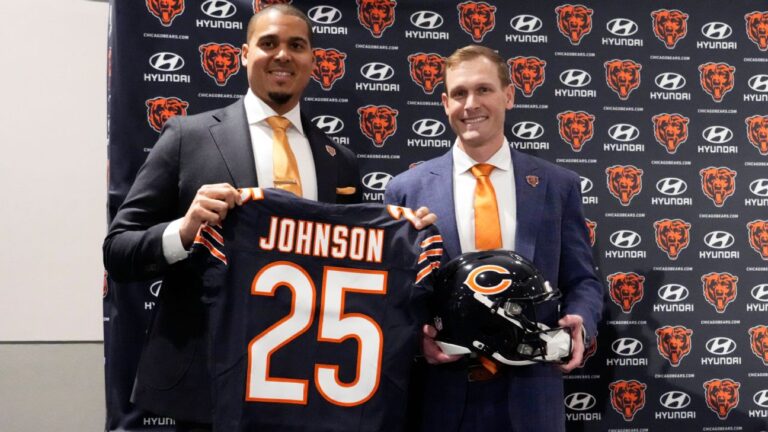DRAFT STRATEGY FOR PICK 7 IN 2024 ROOKIE DRAFTS: MY PRE-DRAFT PLAN
As with most of my early to mid-first-round rookie picks, I am looking to select an elite quarterback prospect to build my team around for hopefully the next decade. As great as the wide receivers in this class are, I’m looking to extract value from the most important position on the field: quarterback. This pick is tough, considering you likely have no idea who will slip down opposing managers’ draft boards.
The “best” case scenario for this strategy is, of course, all “Big Three” wide receivers being selected, allowing those highly-touted quarterbacks to drop into the middle of the first round. At pick No. 7, I’m praying that one of either Drake Maye or J.J. McCarthy falls. I believe Drake Maye has the highest ceiling out of anybody in this class, besides Caleb Williams — who is set up for the Chicago Bears with their new signings and drafted rookies.
As I mentioned in the RSJ 2024 Dynasty Rookie Draft Roundtable article, Maye has sky-high potential and the upside to be one of the better quarterbacks in this league. As quarterback for the University of North Carolina, Maye’s best target was fourth-round selection Devontez Walker. Despite this, Maye could still reach an 8% big-time throw rate on an average of nearly 45 drop-backs a start (Football Insights).
For comparison – the Heisman Trophy award-winning quarterback, Jayden Daniels, had nearly half the big-time throw rate on an average of 35 drop-backs per start. Daniels was throwing to the No. 6 overall pick in Malik Nabers, as well as the No. 23 overall pick in Brian Thomas Jr. Now, watch these snaps play out from Drake Maye below and tell me he doesn’t remind you of a certain someone.
People claiming “Maye is NOTHING close to Josh Allen” are just running with narrratves that media heads are shouting lmao pic.twitter.com/cgpbVWsfZ3
— QB Gawd (@MrPhilMeUp) May 3, 2024
Read more: “How to draft” from the… 1 | 2 | 3 | 4 | 5 | 6 | 7 | 8 | 9 | 10 | 11 | 12 spot
PICK 1.07: J.J. MCCARTHY, QB, MINNESOTA VIKINGS
I am ecstatic to land a top quarterback in the 2024 class – who is also headed to arguably the best situation of all players in the draft. Before the draft, I was rather skeptical of J.J. McCarthy’s talent. Nonetheless, this landing spot is hard to ignore. I did hope Drake Maye would fall here, but I am definitely not complaining about getting J.J. McCarthy.
Filling a hole left by Kirk Cousins, McCarthy now has a wide array of weapons at his disposal in what looks to be one of the better young offenses in the NFL. With arguably the most elite receiver in the game in 24-year-old Justin Jefferson, a stud receiver like Jordan Addison coming off a great rookie season, as well as a rock-solid tight end option in T.J. Hockenson – it’s hard to imagine J.J. McCarthy is not going to produce given the super-star talent in this offense.
Nick Mullens even threw seven touchdown passes and 1,223 passing yards over his last four games with the Vikings. The main difference is that Mullens often makes mistakes involving turnovers, while J.J. McCarthy seems to have a better handle on the ball — considering he turned the ball over only once from the start of his Big Ten schedule to completing the undefeated season with a National Championship.
Most argue that McCarthy was carried by his defense at Michigan and did not need to air it out too much. A portion of that may be true, considering how elite that Wolverines team was, but McCarthy’s stellar performances must not be ignored.
At just 20 years old, J.J. did everything necessary to lead the Wolverines to a record of 28-1 over the last two seasons and a National Title this past season. Per Player Profiler, McCarthy is in the 80th percentile for breakout age, 79th percentile for yards per attempt in college, and 94th percentile for QBR in college.
He put up the same yards per attempt (9.1) as Caleb Williams did in his Heisman Trophy-winning season in 2022. He also owned a 22-to-4 touchdown-to-interception ratio with over a 73 percent completion rate. For comparison, Bo Nix set the NCAA record for completion percentage in a collegiate season by completing over 77 percent of his pass attempts.
PlayerProfiler Stat of the Day🤖
— PlayerProfiler (@rotounderworld) March 25, 2024
Michigan ranked 117th in Pass Play % per Game & 76th in Pass Plays per Game last season🥶
Despite the low volume, J.J. McCarthy finished Top 35 in Pass Yards & Pass TDs + 6th in Completion %🔥
Does he deserve the hype?📢#PlayerProfilerStats pic.twitter.com/mBRZ75OJrN
McCarthy zips passes, buys his team time with his legs, and steps up when he’s passing into tight coverage or throwing a deep ball. College Football Analyst Jordan Reid points out a prime example of J.J. McCarthy firing a completion through a small window in tight coverage.
There are anticipatory throws on McCarthy’s tape. The Ohio State throw isn’t the only one. pic.twitter.com/HHJvosMes5 https://t.co/JdoIR07oG9
— Jordan Reid (@Jordan_Reid) March 22, 2024
It’s true: J.J. McCarthy did not have nearly as many pass attempts in his collegiate career as some of the other quarterbacks in this class. However, the Michigan standout quarterback has arrived in Minnesota accompanied by an offense that was top-five in pass attempts (631) last season.
For perspective – the reigning Super Bowl Champions, the Kansas City Chiefs, were second in the NFL in pass attempts last season with 635. It’s safe to say that the Vikings head coach, Kevin O’Connell, has a much different agenda for McCarthy than his head coach at Michigan, Jim Harbaugh. Despite the low amount of drop-backs, McCarthy showed he can make big-time throws when he needs to (Drake Maye, too).
The Drake Maye chart imo. If you’re a fan, it’s less nitpicking tape (where there’s def flaws) and more about the tools you work towards blossoming while cleaning up the mechanical inconsistencies. Also think higher volume with less around you inevitably surfaces more lowlights. pic.twitter.com/TUwjKEUrv1
— Football Insights 📊 (@fball_insights) April 14, 2024
Because of the amount of value a quarterback can provide your team if it does work out, it’s hard to pass on a proven winner like J.J. McCarthy at the 1.07 – who leaves Michigan with over a 96 percent winning percentage, holding the record for any college quarterback since 1971.
PICK 2.07: TROY FRANKLIN, WR, DENVER BRONCOS
Although I was hopeful Bills wideout Keon Coleman would fall to me here because of the lack of talent in that receiving room. However, there are glaring red flags with him — while the only knock on Troy Franklin is that he fell to the fourth round of the NFL draft. Besides that, many aspects of Franklin entice me. One is that he is now tied to his college quarterback, Bo Nix, who the Broncos also selected. Not to mention, Nix threw 14 touchdown passes to Franklin just last season.
Bo Nix and Troy Franklin connected for 14 TDs last season 🤯
— NFL Draft Files (@NFL_DF) April 27, 2024
Get ready to see a whole lot of this, #Broncos fans: pic.twitter.com/O5B6l3EZBW
This Denver Broncos team seriously lacks any offensive threat, and the wide receiver room is open to taking. Courtland Sutton turns 29 and will be playing in his 7th NFL season in September. As if there wasn’t enough opportunity available on this offense, Jerry Jeudy signed with the Cleveland Browns — leaving a hole for Franklin to grow and develop in.
Franklin’s fate in the NFL Draft has raised many questions; I am here to tell you not to dwell on draft capital but to look at the talent.
Over Franklin’s last two years at Oregon, he caught 142 receptions (204 targets) with a total of 2,274 receiving yards, while also having 23 receiving touchdowns. Per Player Profiler, Franklin also runs a 4.41 40-yard dash (90th-percentile), has an 83rd-percentile burst score, 88th-percentile catch radius, and stands six-foot-two inches tall.
One of my favorite metrics to measure the efficiency of a receiver is first downs per route run. Football Insights has the new Denver Broncos WR in some pretty elite company here (between Justin Jefferson and Garrett Wilson):
First downs per route run and Yards per target from notable WR prospects. pic.twitter.com/23rVdfA4UG
— Football Insights 📊 (@fball_insights) March 22, 2024
This pick could very well crash and burn, but in the middle of the second round — this is exactly the type of shot I am willing to take. After the Broncos selected a quarterback in the first round of the NFL draft, it certainly feels as if they are in some form of a rebuild. Before the draft process, Franklin was being talked about as a first-round pick. The young wide receiver out of Oregon passes the eye test and checks every box we look for in a young receiver.
Career YPRR after removing screens from the 2024 WR class.
— Football Insights 📊 (@fball_insights) February 3, 2024
Considerable boost for certain profiles. pic.twitter.com/PTbCimsuLO
This would not be the first time we saw a player fall down teams’ boards in the NFL draft, only to prove them all wrong with a successful NFL career. Everyone seems to be out on Troy Franklin simply because he fell to the fourth round of the NFL Draft – I love the idea of selecting Franklin at 2.07 before he slips to the beginning of the third round in the mock draft.
PICK 3.07: JAVON BAKER, WR, NEW ENGLAND PATRIOTS
After Bill Belichick called it quits in New England, the Patriots are looking to rebuild their roster with young talent, starting with selecting Drake Maye with the 3rd overall pick in the NFL draft. Once you select your franchise quarterback for the future, he needs wide receivers to help him reach his maximum potential.
One of those is the former UCF standout Javon Baker. If you were wondering who Maye would be throwing to, look no further because Baker is a target hog. He had a 34 percent college target share, in the 97th percentile per Player Profiler. In his final collegiate season, Baker put up 1,139 receiving yards on just 52 receptions with 7 receiving touchdowns. Baker’s 21.9 yards per reception lead the entire 2024 class.
The Patriots now have an alpha receiver who can beat the man on the outside and catch deep passes thrown by Maye.
New #Patriots WR Javon Baker cooks AND mosses Cobee Bryant (a potential top 50 pick in 2025) on this double move.
— NFL Draft Files (@NFL_DF) May 3, 2024
New England got an absolute DAWG ‼️ pic.twitter.com/PfahHM8att
There is a real lack of talent in this New England Patriots receiver room. In fact, not a single Patriots receiver topped the 600-yard receiving mark, and only one went for over 500 yards receiving. Jalen Reagor and Tyquan Thorton are non-factors. DeVante Parker was sent to the Philadelphia Eagles. Between Demario Douglas, Hunter Henry, Kendrick Bourne, and Juju Smith-Schuster, it’s hard for me to believe Baker won’t be given a chance to prove his worth in this offense.
Considering the Patriots were in the bottom five amongst the league in receiving yards, catches of 20-plus yards, and 40-plus yards – Baker will be given his shot to be the big-play receiver in New England.
When you get down to its metrics, Baker looks like any other elite prospect. It gets interesting to put his numbers up side-by-side with a top-10 receiver in the draft like Rome Odunze. For comparison, Baker had higher yards per route run (3.21), yards per reception (21.9), yards after the catch per reception (7.2), and an average depth of target (17.1) than Odunze. This suggests Baker might be getting overlooked.
The top 25 WR in the up coming 2024 NFL Draft.
— Mike (@MikeForcella) February 8, 2024
Javon Baker was extremely impressive in 2023. Baker has a similar career stat profile to Rome Odunze 👀
I stand by the Devontez Walker hate post Senior Bowl is out of hand. Remember when Rashee Rice had a bad Senior Bowl? 🤔… https://t.co/4y3M9IhkZS pic.twitter.com/U04ZBevC3T
At the middle of the third round, Baker is exactly the type of receiver I am looking to select while he’s being overshadowed by the depth of the wide receiver position in this class. If Baker and Maye can gain chemistry over the offseason and connect on those deep passes during the regular season, it’s wheels up for Javon Baker.
PICK 4.07: JACOB COWING, WR, SAN FRANCISCO 49ERS
Regardless of the trade speculation in the San Francisco receiver room with Deebo Samuel and Brandon Aiyuk, Jacob Cowing was a great selection for the 49ers.
In the RSJ Rookie Mock Draft, multiple players were selected before Cowing that I wouldn’t have even thought about selecting before him, such as Braelon Allen, Brenden Rice, and even Theo Johnson—all of whom boast inferior prospect profiles in comparison to Cowing.
The rookie wide receiver out of Arizona brings solid route-running skills, elite agility, and blazing speed with his 4.38 40-yard dash—which is in the 95th percentile. Cowing posted a 61.4 percent college dominator rating—good for the 99th percentile.
Additionally, Cowing had zero issues getting open, considering his 36.8 percent college target share, which is also in the 99th percentile. Long-time NFL wide receiver legend Steve Smith Sr. even gave Cowing his flowers for the exceptional route-running and in-game intelligence he saw on film.
Breaking News! @jaycowing_ is truly electric and really good at football. The film doesn’t lie 🎥🎞️⚡️
— Steve Smith Sr. (@SteveSmithSr89) March 31, 2024
Watch the full breakdown TOMORROW on the #CutToIt✂️ YouTube page!
Happy Easter!! pic.twitter.com/c5tVywMfHt
Finding prospects that breakout early is a good sign, as Cowing boasts a 95th-percentile breakout age. Cowing is also not a stranger to production. When you look at the college production of the last two draft classes of wide receivers, Cowing is in compelling territory (Troy Franklin too!). Could he be the next Tank Dell?
Looking at career production from the last two WR classes, interesting seeing Puka/Tank up there with the big dogs. pic.twitter.com/CnRt8hub02
— Football Insights 📊 (@fball_insights) April 18, 2024
This San Francisco 49ers offense is loaded, so it’s hard to imagine Cowing being productive immediately in 2024. However, I see Cowing’s future role in the offense increasing as Samuel, Christian McCaffrey, and George Kittle grow older.
Head coach Kyle Shanahan knows how to get the most out of his offensive skill players, considering Kittle is a former fifth-round pick, and Deebo was selected in the second round back in 2019. At the 4.08 in a rookie draft, you want the most upside possible for the small price of your late pick.
Jacob Cowing is a must-grab player in the fourth round, and I would spend as high as a third-round rookie pick on him.
SUMMARY: POST-DRAFT THOUGHTS AND PICK 7 STRATEGY RECAP
I typically grab an elite quarterback first, followed by as much upside as possible at the receiver position. I did exactly that in the RSJ Rookie Mock Draft. The potential growth in value at the quarterback position exceeds that of any position there is in superflex leagues – while wide receivers are simply much more sought after than the running back or tight end positions.
J.J. McCarthy lands in a flawless situation with young, elite pass-catchers and a flourishing head coach. Troy Franklin gets the chance to prove every team who passed on him wrong while also having instant chemistry with his college quarterback. Javon Baker will look to carve out a role in a dreadful New England Patriots offense the past few seasons. Jacob Cowing should develop under two elite NFL wide receivers, hoping to prove to Kyle Shanahan he can be a vital weapon for San Francisco one day.
As much as I would have loved to have selected Drake Maye at the 1.07, Keon Coleman or Trey Benson at the 2.07 and Jermaine Burton at the 3.07, I am very pleased with the prospects I drafted. With how stacked this class is at wide receiver, it should not be difficult to land one of the top-four quarterback prospects from this class in the upper-half of your rookie draft – but it may require a bit of luck.
